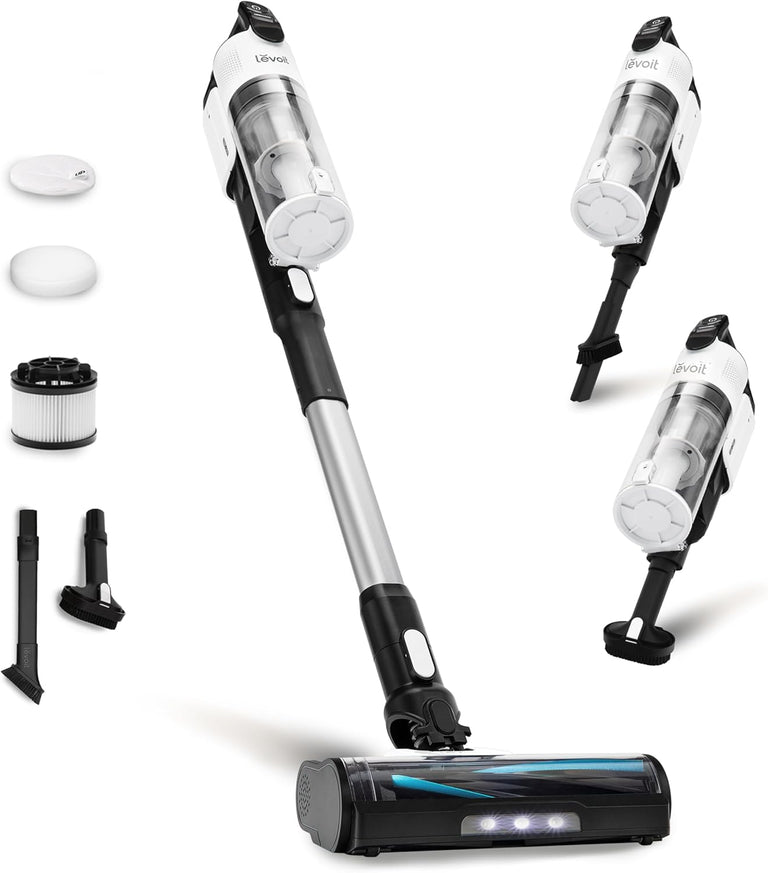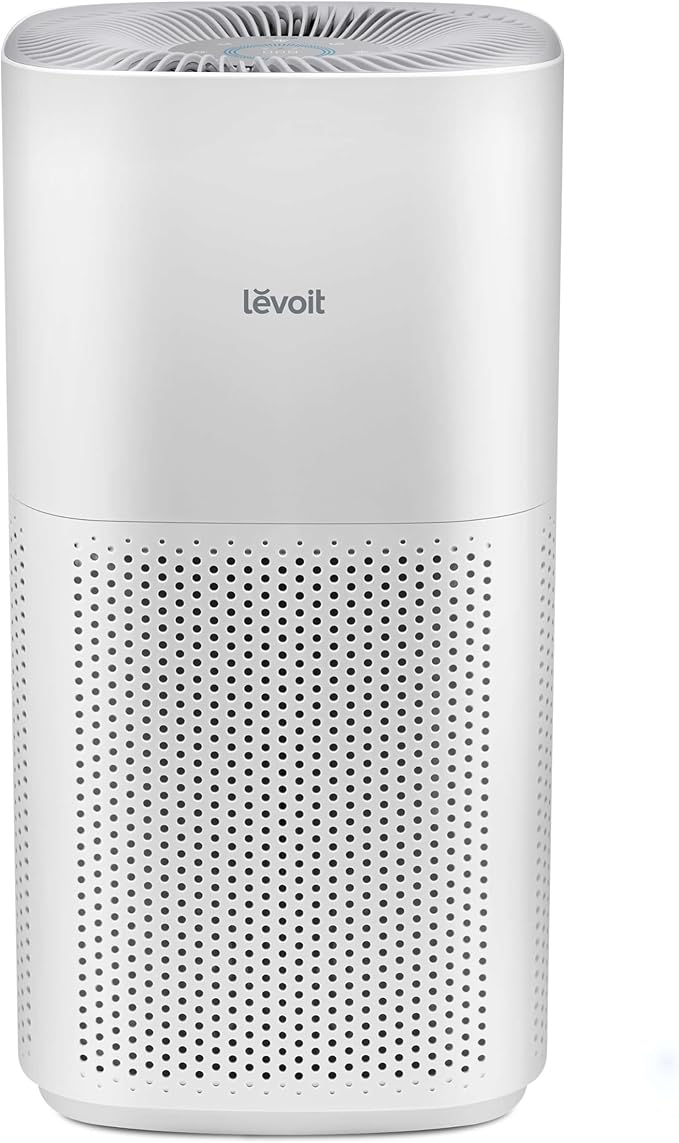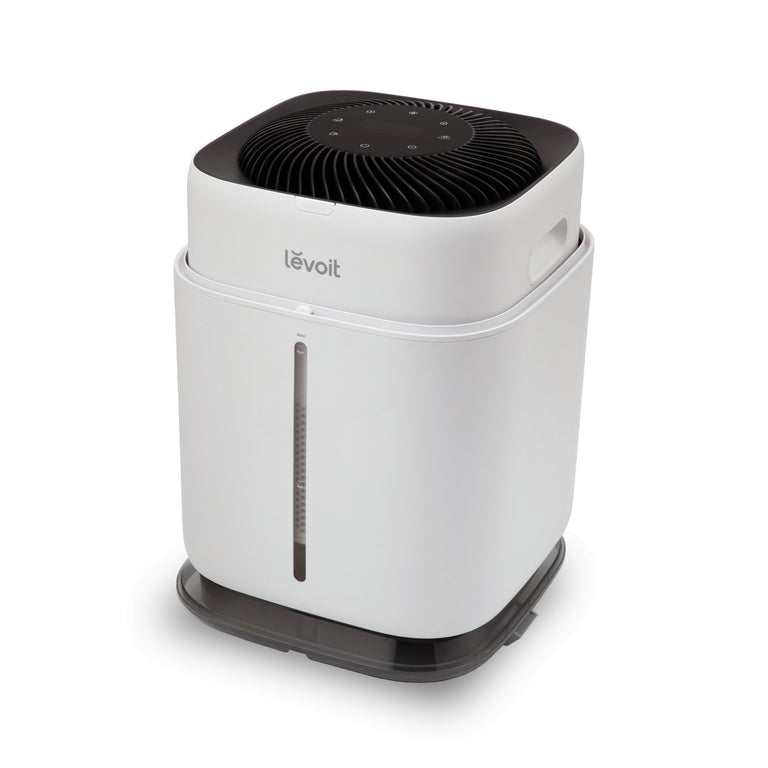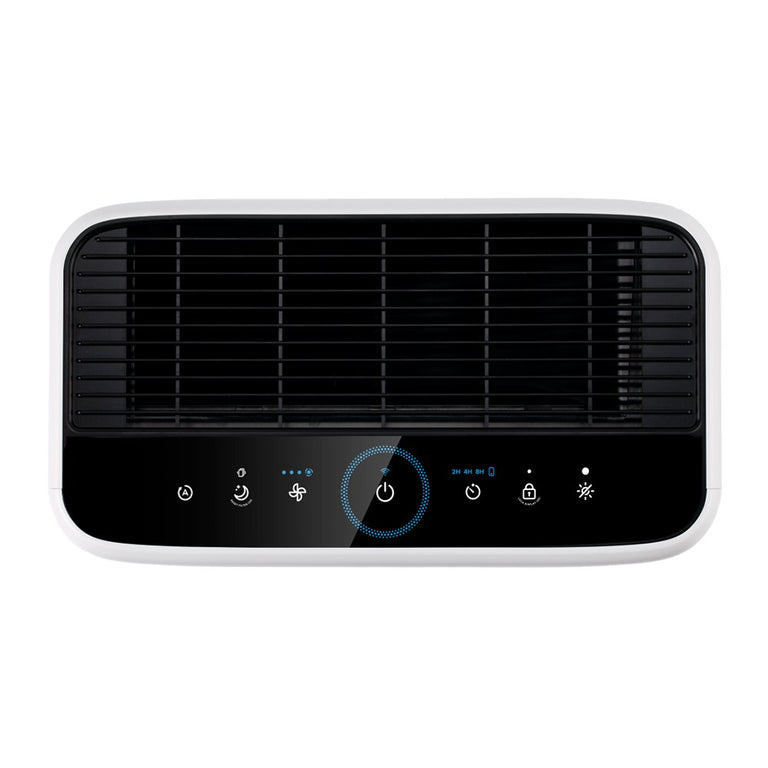
The Importance of Purified Air in Your Home
-
1 min read
The Essential Role of Purified Air
On average, Americans spend about 90% of their time indoors—making good indoor air quality crucial for our well-being. Yet many of us don't realize how polluted the air inside our homes and workplaces has become. Recent studies have revealed that indoor air can be up to 5 times more polluted than outdoor air, containing contaminants that can negatively impact us in many ways.
So, what does it mean to have purified vs. polluted indoor air?
Purified air has lower levels of pollutants, usually because of proper ventilation, air cleaning devices, and even natural purification from plants. Polluted air typically contains common contaminants like dust, mold spores, chemicals from household cleaners and building materials, and more.
In this post, we'll look closer at common indoor air pollutants, their effects on our health, and practical ways to promote purified air inside your home. With some simple changes, you can start experiencing the benefits of fresh air throughout your home.
Sources of Indoor Air Pollution
Indoor air can contain a wide variety of pollutants. Some common sources of indoor air pollution include:
Cooking: Fumes, smoke, and grease particles can lower your air quality when you’re cooking at high temperatures. Natural gas stoves release carbon monoxide and formaldehyde into the air, which can be toxic to people and pets. And cooking over a gas stove—particularly heating oils and fats at temperatures that are too high—can also generate air pollutants.
Cleaning supplies: Many cleaning products contain volatile organic compounds (VOCs) that evaporate into the air. Ironically, aerosol air fresheners are a common culprit of poor air quality due to released VOCs.
Dust and dander: Dust particles from dirt, fabric fibers, pet dander, mold, and other sources can accumulate and circulate in indoor air. This can be especially problematic for people with allergies or asthma.
Smoke: Secondhand smoke from tobacco products quickly lowers your home’s air quality.
Outdoor pollution: Outdoor pollutants from cars, factories, and wildfires—including PM2.5, a harmful particulate matter—can get drawn inside through ventilation systems and open doors/windows. You can check your local air quality index (AQI) to see what the outdoor pollution is like each day.
Mold: Excess moisture allows mold to grow in damp areas, which then releases spores and VOCs into your air.
VOC emissions from furniture: Many furniture products and building materials like plywood and insulation can emit VOCs.
Monitoring and controlling these common pollutants is key to maintaining clean indoor air.
Ways to Protect Your Home’s Air Quality
Because indoor air can contain various pollutants, purifying the air inside your home is important. Here are some effective ways to remove impurities and circulate fresh, clean air throughout your living space:
Ventilation
One of the simplest ways to freshen indoor air is to open your windows regularly. This allows fresh outdoor air to enter while stale indoor air exits. Aim to open your windows for 5–10 minutes daily, even during colder months. Proper ventilation exchanges the air inside your home and reduces dust, odors, and humidity.
Houseplants
Certain houseplants are excellent natural air purifiers. They absorb toxins like formaldehyde, benzene, and trichloroethylene from the air through their leaves and root systems. Some of the best air-purifying plants are aloe vera, English ivy, peace lilies, snake, and spider plants. Place these plants throughout your home to passively clean the air.
Air Purifiers
An air purifier traps airborne particles and promotes better air circulation. It’s good practice to place air purifiers in rooms where you spend the most time.
Vacuuming and Dusting
Dust that accumulates on surfaces can get stirred up and pollute indoor air. Regular vacuuming and dusting help keep dust under control. Use a vacuum with a filter to capture dust and particles effectively and try to dust furniture, ceiling fans, and electronics weekly.
Avoid Harsh Chemicals
Many cleaning products and air fresheners emit harmful VOCs that lower indoor air quality. Avoid cleaners with bleach, ammonia, and other harsh chemicals. Opt for natural cleaning solutions made with safe, non-toxic ingredients. You may also want to avoid using artificially scented candles and synthetic room sprays, which can emit contaminants into your air.
Monitor Humidity Levels
Excess moisture in the air promotes the growth of mold, mildew, and dust mites. Purchasing a hygrometer will help you monitor humidity levels, which should be between 30–50%. Use exhaust fans, dehumidifiers, and air conditioners when needed to reduce excessive humidity.
Choosing an Air Purifier
When selecting an air purifier for your home, there are several key factors to consider.
Main and Activated Carbon Filters: Levoit's Main filters are great at trapping microscopic airborne contaminants such as pet dander, pollen, and dust, while Activated Carbon Filters absorb gases, odors and VOCs. Many air purifiers combine both filter types for comprehensive purification.
Coverage: Remember to check the square footage of the room you’d like to purify before ordering an air purifier. This will ensure the air purifier you’re getting is the most efficient choice for the size of your room.
Noise level: Look for units with noise levels under 50dB for quiet operation. This way, you can leave the air purifier on while you sleep for fresh air throughout the night.
Energy use: More powerful air purifiers consume more electricity. Comparing energy efficiency ratings and operating costs will help you determine the right air purifier for your household.
Cost: Initial purchase price, ongoing filter replacement costs, and energy bills determine long-term costs—balance performance with your budget.
Maintenance: Replace filters as needed per manufacturer instructions, usually every 6–12 months, and clean the unit regularly to prevent buildup.
Choosing the right air purifier involves evaluating these key factors against your needs and priorities.
Using Houseplants to Purify Air
While they won’t perform at the same level as an air purifier, indoor houseplants are a natural and attractive way to help purify the air in your home. Here are some of the best houseplants for air purification:
Spider Plants
Spider plants are excellent for absorbing benzene, formaldehyde, carbon monoxide, and xylene from the air. This easy-to-care-for plant grows well in bright, indirect light and only needs moderate watering. The long green leaves with white stripes give it an eye-catching look, perfect for your windowsill or shelf.
Peace Lilies
With large dark green leaves and elegant white flowers, peace lilies are one of the top plants for removing trichloroethylene, benzene, and formaldehyde molecules. They thrive in low light and high humidity, making them well-suited to many indoor environments.
English Ivy
English ivy effectively absorbs benzene, formaldehyde, xylene, and toluene. Let this versatile vine trail in a hanging basket or climb a moss pole. It can tolerate both bright and low light conditions.
Red-Edged Dracaena
The red-edged dracaena is a tropical plant with long, red-edged green leaves. It removes formaldehyde, xylene, and toluene from indoor air. It can reach 4–6 feet tall for maximum air purifying benefits and does best with medium light.
Snake Plants
With stiff, upright leaves, snake plants are one of the top plants for filtering out formaldehyde. They also remove xylene, benzene, and trichloroethylene. Snake plants tolerate low light and irregular watering, making them ideal for beginner plant owners.
Areca Palms
Slender trunks topped with arching green leaves give areca palms a graceful, tropical look. They filter xylene and toluene out of indoor air. Provide bright, indirect light and frequent watering for areca palms to thrive.
Adding a few air-purifying plants is an easy way to naturally filter and refresh the air in any home or office. With the right care, houseplants can flourish for years while improving indoor air quality.
Lifestyle Changes for Better Air
Making small changes in your daily lifestyle can improve the air quality in your home. Here are some tips:
Stop smoking indoors: Smoke contains many harmful chemicals that linger in the air. If you smoke, take it outside. Your air quality will greatly improve.
Choose cleaning products carefully: Many conventional cleaning sprays and solutions contain harsh chemicals that pollute indoor air.
Limit scented candles: While candles can set the mood, artificially scented ones can release potentially toxic VOCs into the air as they burn. Minimize their use or look for natural soy or beeswax candles.
Cook with good ventilation: Cooking with gas can generate air pollutants like nitrogen dioxide, carbon monoxide, and formaldehyde. Always use kitchen vents and open windows to allow airflow when cooking.
Regularly wash bedding: Dust mites and pet dander can accumulate on your sheets, blankets, and pillows, degrading your air quality as you sleep. Wash them weekly in hot water to remove allergens.
Making a few simple changes like these can help reduce sources of indoor air pollution and lead to a home environment with better air quality overall.
Creating a Home Wellness Routine
Maintaining purified air in the home requires good habits and sticking to a consistent routine. Here are some tips for creating an effective air purification regimen:
Daily vacuuming/dusting: Vacuuming carpets and dusting surfaces like shelves and furniture should be done daily. This prevents dust and dander from accumulating and recirculating through the air. Use a vacuum with a filter to capture dust and various other types of pollutants.
Weekly purifier filter cleaning: Air purifier filters should be cleaned or replaced weekly to maintain peak performance. Follow your specific unit's instructions, but washing reusable filters or replacing disposable ones regularly improves air flow and filtration.
Monthly vent inspection: Take time each month to inspect vents throughout the home. Clean out any dust buildup and ensure furniture or objects do not obstruct your vents. Proper airflow from vents is key for circulating purified air throughout the home.
Seasonal humidifier use: During dry winters and summers, use a humidifier to add moisture back into the air, as dry air allows pollutants to recirculate more. Proper humidity, around 30–50%, can help reduce airborne pollutants.
Sticking to a home wellness routine will help you maintain fresh indoor air all year long.
Frequently Asked Questions
What is purified air?
Purified air refers to air with reduced pollutants, allergens, and other particles. It typically involves using air purifiers or filtration systems that employ technologies like our Main Filters or Activated Carbon Filters to remove contaminants, ensuring cleaner and better-quality air.
How do air purifiers work?
Air purifiers draw in air and pass it through a filtration system, trapping tiny particles such as dust, pollen, pet dander, and smoke. The purified air is then released back into the environment, improving the overall air quality.
What are the benefits of using an air purifier?
Air purifiers trap airborne particles, help neutralize unpleasant odors, and improve indoor air quality. This may be helpful for pet owners and people with conditions that are exacerbated by poor air quality.
How often should I run my air purifier?
The frequency of running an air purifier depends on various factors, including the specific needs of your environment. It is generally recommended to run the air purifier continuously or for extended periods, especially in rooms where you spend the most time. This ensures consistent air purification and helps maintain optimal air quality. However, some air purifiers have adjustable fan speeds or timers that allow you to customize the operation according to your preferences and schedule.
Do I still need to dust and clean my home if I have an air purifier?
Yes, even if you have an air purifier, it is still necessary to dust and clean your home regularly. While air purifiers can help reduce airborne particles, they may not capture all dust settling on surfaces. Regular cleaning helps prevent the buildup of dust, and other pollutants, further improving indoor air quality. Combining a clean environment with an air purifier can provide the best results.
Just Breathe: Creating a Haven of Fresh Air
Indoor air quality is an important but often overlooked aspect of the home environment. Throughout this article, we've explored the various sources of indoor air pollution, ranging from cooking fumes to off-gassing from furniture and cleaning supplies. Consistent air purification, proper ventilation, and developing good habits are essential in reducing poor quality air and keeping your home fresh.
Over time, your efforts will contribute to a better indoor environment for you and your family.
Important Note
The information provided here is for informational and educational purposes only and should not be used in medical emergencies or for diagnosing or treating any medical condition. It's crucial to consult a licensed medical professional for diagnosis and treatment. External links are for informational purposes and do not constitute endorsements. No warranty of any kind, either expressed or implied, is made as to the products and/or the accuracy, reliability, timeliness, or correctness of the information provided herein.
Citations:
Volatile Organic Compounds' Impact on Indoor Air Quality | US EPA
Indoor Air Quality and Climate Change | US EPA
Featured Products
-
Sold Out
- Smart
- Large rooms
-
- Smart
- Medium rooms
-









